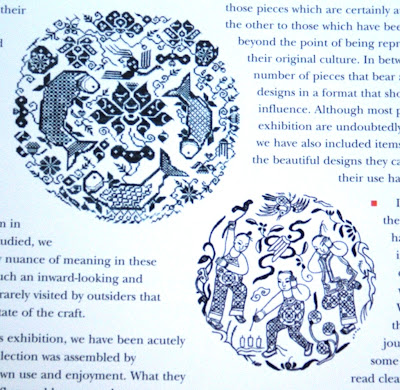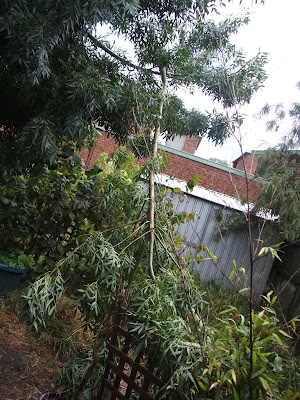I went to see the exhibition of indigo embroidered household textiles from Szechuan in the 1900s. The Gold Museum in Ballarat was given the collection of Robina and George Arnott-Rogers, missionary doctor and engineer respectively. George was born in Bacchus Marsh, apprenticed in Ballarat and worshipped at the little wooden Jubilee Hall beside Lake Wendouree.
These textiles, the exquisite household work of the women of Szechuan (yes, I'm using the 19th century spelling), are now very rare. Ballarat may have the largest collection outside China - and the work may have vanished there also.
This is the second showing of the textiles, I went five times before they went on a national tour, and this was my farewell visit as they are going back into protective storage.
I forgot to take a camera so I've had to use images from the exhibition catalogue. Unfortunately they are deceptive, giving no proper idea of the scale of the work or the complex and grand designs on the larger pieces. Some of the embroideries are bed-size valances and very dramatic.
The work is sophisticated and rich in pattern but they use a small stock of stitches; mostly cross stitch, stem stitch, and stitching similar to European blackwork. The colours are indigo and white, the thread and fabric are cotton.
The catalogue is only $4.00 and is available still as is a $6 folder of embroidery patterns taken from the textiles. They are well worth buying, even if you missed the exhibition.
These embroideries touch a common heritage - since the Chinoiseries of eighteenth century Europe the images of China have become part of our imaginative life too.
And we find images sewn in remote Szechuan over a hundred years ago on our own tables now.




















































